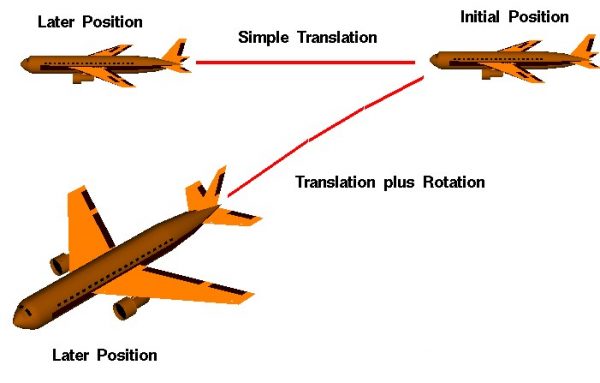Basic Object Motion

Objects
We live in a world that is defined by three spatial dimensions and one time dimension. Objects move within this domain in two ways. An object translates, or changes location, from one point to another. And an object rotates, or changes its attitude. In general, the motion of any object involves both translation and rotation. The translations are in direct response to external forces. The rotations are in direct response to external torques or moments (twisting forces).
Motion
The motion of an aircraft is particularly complex because the rotations and translations are coupled together; a rotation affects the magnitude and direction of the aerodynamic forces which affects the translation. To understand and describe the motion of an aircraft, we usually try to break down the complex problem into a series of easier problems. We can, for instance, assume that the aircraft translates from one point to another as if all the mass of the aircraft were collected into a single point called the center of gravity.
Force
We can describe the motion of the center of gravity by using Newton’s laws of motion. There are four forces acting on the aircraft; the lift, drag, thrust, and weight. Depending on the relative magnitudes and directions of these forces, the aircraft climbs (increases in altitude), dives (decreases in altitude), or banks (rolls to one side and turns). The magnitude of the aerodynamic forces depends on the attitude of the aircraft during the translations. The attitude depends on the rotations about the center of gravity. A rotation is caused by a force being applied, at some distance from the center of gravity. When the aircraft is trimmed, rotations caused by several forces are balanced and the aircraft does not rotate.
